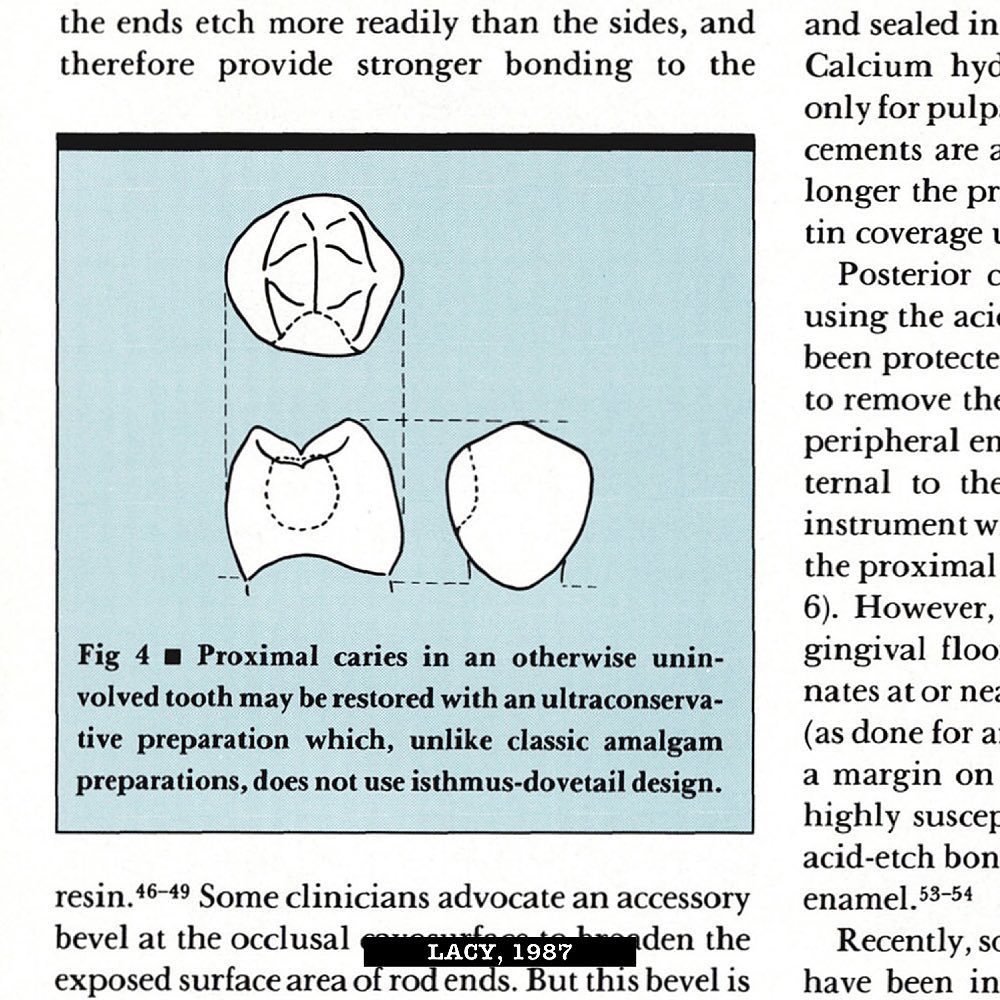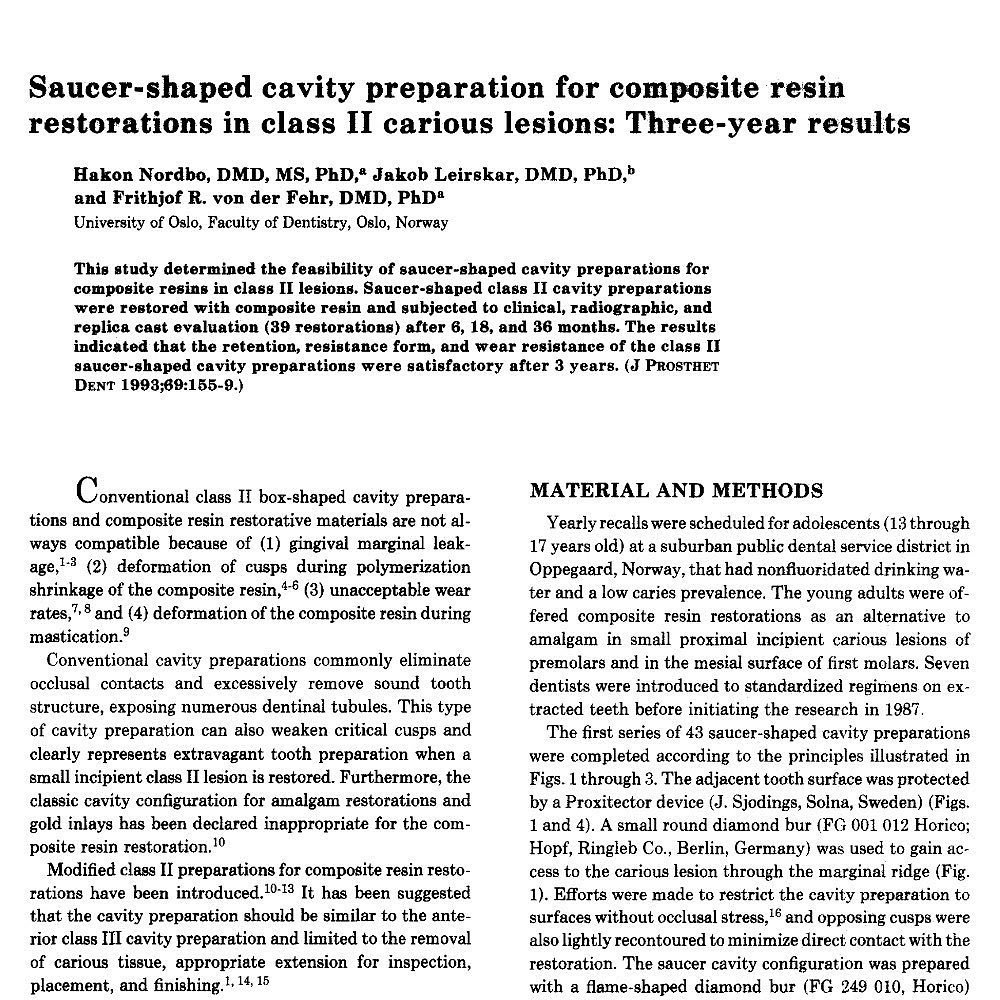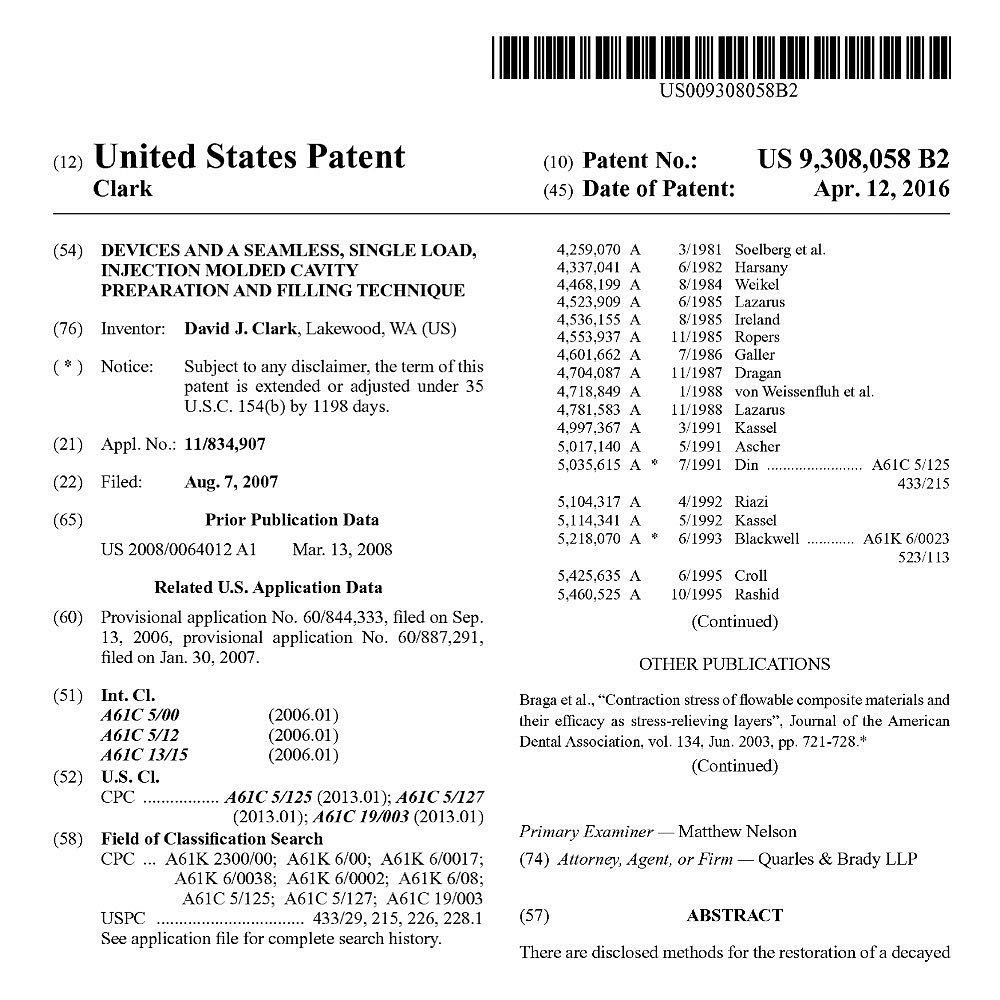Bioclear and the Modern Cavity Preparation
The “Bioclear Method” is a composite restorative protocol based on the alleged inventions of David Clark, DDS, President of Bioclear Matrix, a dental matrix company, and heavily marketed by 3M Oral Care. The Bioclear Method involves a patented anatomic mylar matrix, a bulk-filled dual-viscosity composite resin (AKA snowplow, single load, injection mould), and a “minimally invasive” cavity preparation.
Clark claims he invented “modern” Class I and Class II cavity preparations as a means to transition composite dentistry from the dark ages of G.V. Black. These preparations are described by Clark as having open, non-retentive, and significantly beveled characteristics that mimic a flower or serpentine and facilitate placing the composite resin in compression with a sealed “infinity” margin.
In fact, researchers have been exploring optimal cavity preparations for composite since 1987 when Alton M. Lacy, PhD, DDS took “A critical look at posterior composite restorations.” Lacy established in this 1987 paper that “sharp line angles are not indicated,” “cavity walls are extended to facilitate finishing,” and “the occlusal cavosurface angle should be obtuse to expose the ends of the enamel rods” among many other key cavity preparation characteristics.
Of note, Lacy stated, “Some clinicians advocate for an accessory bevel at the occlusal cavosurface to broaden the exposed surface area of rod ends.” He reasoned that “an occlusal bevel will expand the area of sealed contact and may fortify the restored tooth.” Lacy’s work was followed up in 1993 by Hakon Nordbo, DMD, PhD et al.
Nordbo (1993) conducted studies to determine the feasibility of saucer-shaped preparations for composite in Class II lesions. He detailed how saucer-shaped preparations had previously been introduced. He explained how “the outline of the saucer-shaped preparation was extremely conservative, disregarding the principle of “extension for prevention.”
Academics with this historical background, including highly respected academic researchers like Alireza Sadr, DDS, PhD and Sami Dogan, DDS from the University of Washington School of Dentistry, strongly reject Clark’s claims, yet he was still able to obtain a patent involving the concept, even while citing Nordbo’s work. The truth, however, is scorched in decades of published scientific literature.
To learn more about science-driven Biomimetic Restorative Dentistry, visit www.practicalbrd.com.









